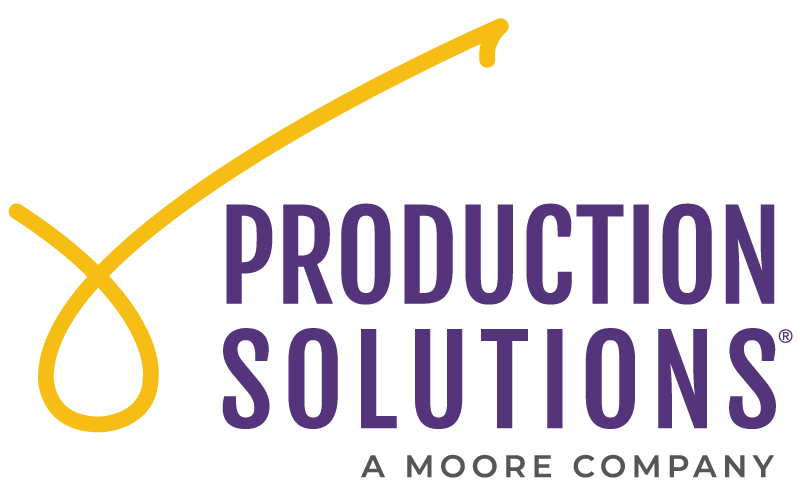Does Quality Copy Still Matter?
 Production Solutions
Production Solutions
If “content is king”…the king is dead. Long live the king!

Nonprofit marketers: don’t kill the “king!”
Fred Vallejo and I got to talking recently about the quality of direct mail nowadays. Gone are the days where a letter might bring tears to your donors’ eyes upon reading the printed words – not just by looking at the heart-tugging photos. After hearing his thought-provoking arguments for reviving the “dead king” (a.k.a. content), I asked him to be a guest blogger for Production Interrupted this week. Fred, a seasoned direct mail wordsmith, shares with us his frustration about what is being passed off these days as compelling fundraising copy, when it is, in fact, the polar opposite.
There was a time in the direct response business when “copy was king.”
Copywriters were admired for their ability to devise creative direct response “hooks,” write teasers so compelling that the reader had no choice but to open the envelope, and craft emotionally evocative copy that pushed the reader on, on, on to the action required.
From all indications these days, the king is dead. And that’s a sad turn of events.
More than at any other time I can remember – and my days in the direct response world began in the 1980s – copy has been devalued and “commoditized.” Copywriters find themselves just another vendor caught up in the ever-spinning wheel of project deadlines and production schedules. Everywhere I turn it seems that agency principals are writing copy, agency account reps are writing copy, even clients (with little or no prior experience) are writing copy.
Perhaps it’s no coincidence that much of the copy hyperventilates, employs hollow scare tactics, or resorts to using ask after ask – as if a blunt instrument – to beat the reader into submission. Forget savvy organizational positioning and quality messaging.
In many instances, copy has become utterly formulaic. It’s writing by checklist. Outer envelope: teaser copy of any sort … check. Paragraph three: first, quick ask … check. Paragraph eight: indent, bold, and formalize the “ask” … check. P.S.: reference enclosure and repeat call to action … check.
One letter reads like the next. The names of the organizations may change, but that’s about it. Copy fails to challenge the reader’s thinking or touch their heart. And as for trying anything different, new, or risky – not a chance. Go without a teaser? You must be crazy! Leave off a P.S.? Impossible! Place the first ask on page four? No one will see it or give!
And all this comes at a time when response rates have dropped, retention rates have sunk, and revenues have fallen. Could there be a logical connection between poorer results and lackluster, paint-by-number copy? Draw your own conclusions.
To hear agencies and clients tell it, the economics of the direct response business have become so challenging that they look to save costs at any turn – and the “creative budget” (copy and art) is an easy target, even though copy fees are lower than they were 20 years ago and despite the fact that those fees are a small percentage of the overall cost of a mailing (after factoring in paper, postage, and printing).
So let’s cut to the chase. What makes professional copywriters worth hiring?
First, they’ve been trained in the art of copywriting – and I use the word “art” advisedly. They know when to keep the rules and when to break them to best advantage. These are gut feelings. Judgment calls. But they’re based on years of experience.
Second, they know which words – nouns, verbs, and adjectives/adverbs – pack the most punch and elicit the desired reaction. For example, “I think” is generally considered a statement of superficial conclusion while “I believe” indicates a more deeply held position. As Mark Twain said, “The difference between the almost right word and the right word is really a large matter – it’s the difference between the lightning bug and the lightning.”
Third, professional copywriters know how to listen. Sometimes I’m accused of being “quiet” on a conference call. It’s not laziness, it’s wisdom in practice. Talk less, listen more. Understand the nuances of your client’s issues. Learn about their donors and strive to understand what matters from their point of view. By paying close attention and listening hard the writer can produce copy that not only accurately reflects an organization’s core identity but comes across as fresh, honest, and credible.
Fourth, copywriting pros know that every sentence you write must, ideally, make your reader want to read the next sentence. The teaser is written to get the reader inside the package; that’s the one-and-only reason for a teaser. The first sentence exists only to get the second sentence read. The second to get the third sentence read and so on, pulling the reader through the copy, answering their objections, motivating them to take the desired action.
I don’t know that copy will ever be king again – at least not the way it once was. Still, I look forward to the day when so-called creative meetings no longer focus on the latest “hot” technique, gimmick, or premium but on messaging that captures and distills an organization’s unique nature, makes it relevant to today’s donor, and convinces them to say a resounding “Yes!” to that organization’s important mission.

Fred Vallejo
For more than 25 years now, Fred Vallejo has been a nationally known, award-winning freelance direct marketing copywriter and creative consultant. Many thanks to Fred for sharing his provocative insights with Production Interrupted.




